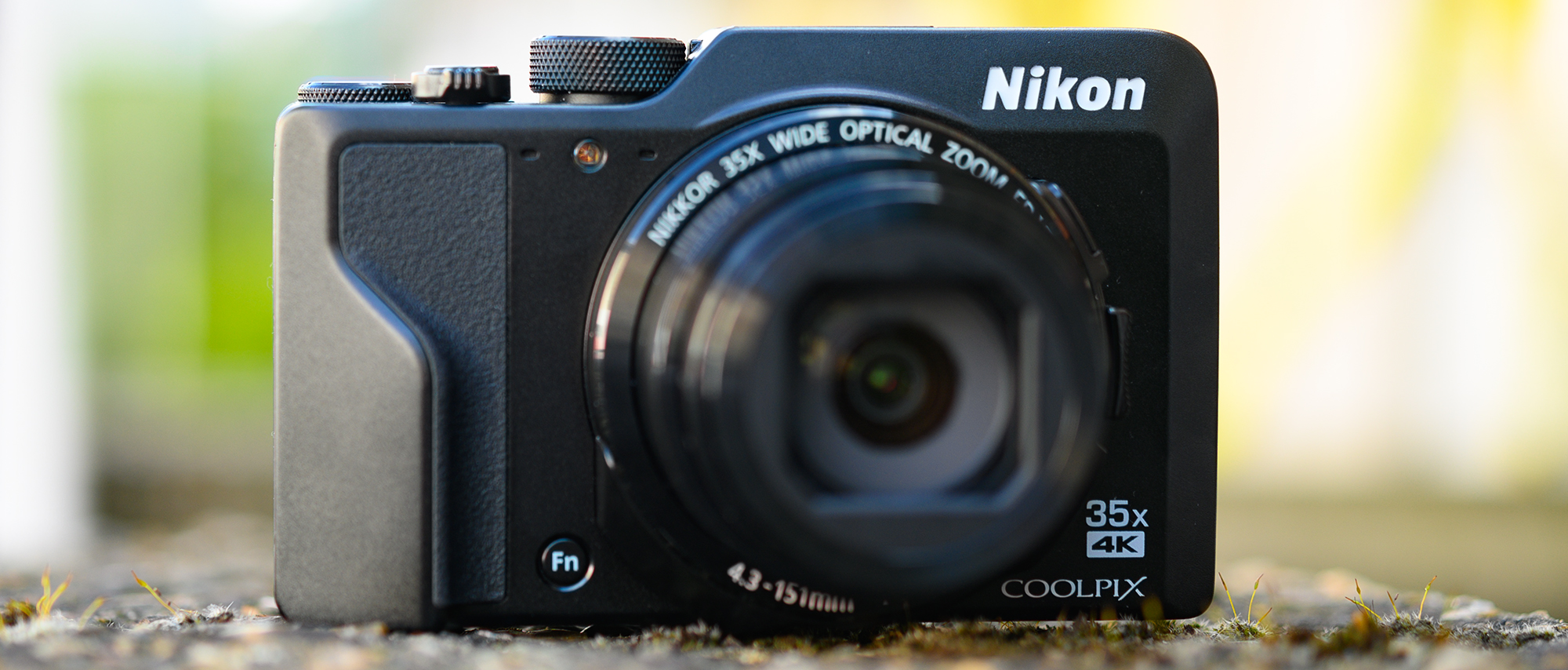TechRadar Verdict
With its well-rounded feature set, a lens that covers all eventualities and the ability to produce nice, colorful images, the A1000 scores some key points. The usual bugbears associated with such small sensors, however, together with frequent responsiveness issues and a handful of annoying design quirks make it difficult to recommend.
Pros
- +
Sturdy metal front plate
- +
Useful raw shooting option
- +
LCD tilts to face the front
- +
Excellent zoom range
- +
Fast start-up time
- +
Face Detection works well
Cons
- -
Lens very prone to flare
- -
Frequent issues with response
- -
Heavy noise reduction in JPEGs
- -
Cramped rear dial
- -
Poorly positioned EVF sensor
- -
Pricey considering its performance
Why you can trust TechRadar
The Essential Review
This is TechRadar’s review summary, which gives you all the key information you need if you’re looking for quick buying advice in 30 seconds; our usual full, in-depth review follows.
Smartphones may have crushed much of the compact camera market, but until they start to offer 20x or 30x optical zooms with credible results, compact cameras that do the same won't be going anywhere.
The Nikon Coolpix A1000 is one of the latest arrivals in this arena, packing a 35x optical zoom lens that offers a focal range equivalent to 24-840mm in 35mm terms.
It may have a number of cheaper competitors vying for the same audience, but with the further additions of an electronic viewfinder, a 3-inch tilting touchscreen, raw shooting and 4K video capabilities, it's a camera that's clearly pitched at those who are after more than just a long zoom.
The A1000 records images and videos with a 16.1MP CMOS sensor, one that's back-illuminated for better light gathering. This measures 1/2.3 inches, which is fairly small but entirely expected for a camera with such an ambitious lens.
It operates across an ISO range that stretches to ISO6400, and with Vibration Reduction on board you should be able to use slower shutter speeds and longer focal lengths with better results.
The body isn't quite a small as those of some other superzoom compacts, but you can still just about squeeze it into a pocket. As with some other cameras of this kind, you can zoom with both a collar around the shutter-release button or using an alternative control on the side of the lens, while two dials – one on the top plate and another on the rear – make changing many settings fast and straightforward.
Sign up for breaking news, reviews, opinion, top tech deals, and more.
The front plate is metal, and has a small grip fashioned into it to help with handling, together with a useful, customizable Fn button positioned beneath its lens. The back plate is loaded with controls, however, which leaves very little room for the thumb to rest without accidentally pressing anything.
The viewfinder's proximity sensor is placed where it easily mistakes your hand for your face, which has the effect of sending the feed from the LCD screen to the viewfinder when you don't expect it. The LCD is very flexible though, able to be tilted up or all the way around to face the front, without the viewfinder getting in the way of low-angle shooting.
The A100's autofocusing system is capable of bringing subjects to focus quickly, in both good and less-than-ideal conditions, but it doesn't manage to do so consistently. Even in good light it can occasionally struggle to get a lock on the right subject anywhere near as quickly as some competitors can.
Image quality is mixed. Sensors this small tend to struggle when shooting in all but the most balanced conditions, but even when light is good images from the A1000 often show less detail than hoped for. Providing you're using a low ISO, a high shutter speed and impeccable technique it is possible to get nice detail, but again the camera isn't the most reliable performer.
Some of the issues here appear to be down to the softness at the wide-angle end of the lens, although noise reduction is also partly responsible. You can switch it to Low which helps in JPEGs, but you can't disable it completely – and this is very apparent when shooting at higher ISOs. Your best bet is to capture in raw and process your images later.
The A1000 does well at times to balance scenes that have a mixture of highlights and shadows, given the limits of its understandably narrow dynamic range. But on other occasions it can overexpose scenes that really shouldn't give it much bother, making exposure compensation or manual exposure control necessary. Colors in JPEGs are pleasing, however, and video quality is not unreasonable for a camera with such a small sensor.
The stabilization system visibly helps to stabilize the scene as you compose your images, and this translates to better detail than you might otherwise get. A profile that corrects vignetting, distortion and chromatic aberration immediately applies corrections to raw files when these are opened in Adobe's raw-supporting programs, and this works well to banish these aberrations.
In short, there are some nice things about the Nikon A100, such as the flexible LCD, the presence of a electronic viewfinder and raw shooting. But operational quirks and less-than-ideal responsiveness, together with mixed image quality, mean it just doesn't impress enough.
Who’s it for and should I buy it?
The Nikon Coolpix A1000 is intended for those who need a considerable zoom range inside a pocketable body, and are prepared to pay a little extra for the convenience of an electronic viewfinder. The presence of raw shooting also indicates that Nikon reckons such a camera will appeal to those looking to process their images, rather than simply those looking to use images straight from the camera.
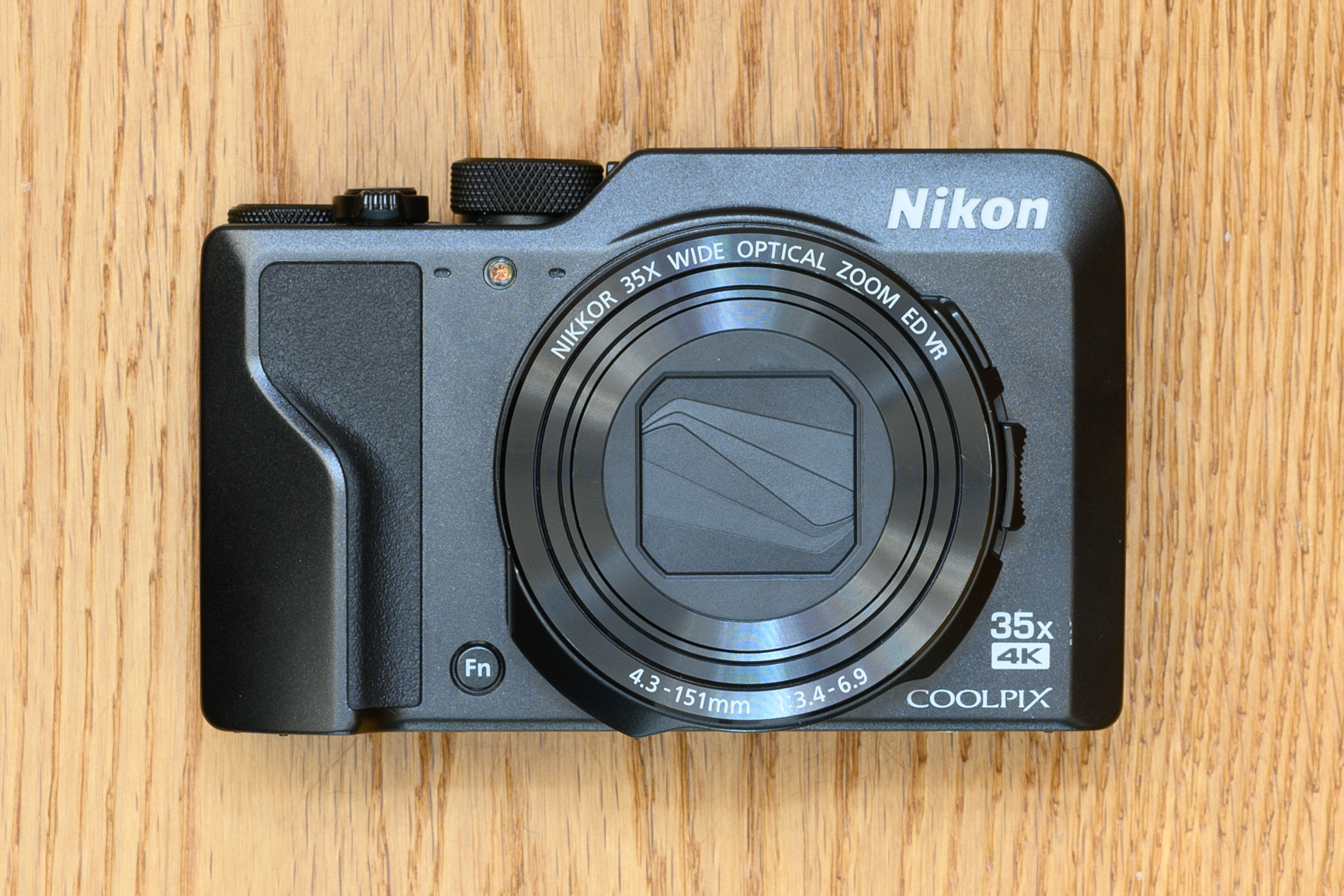
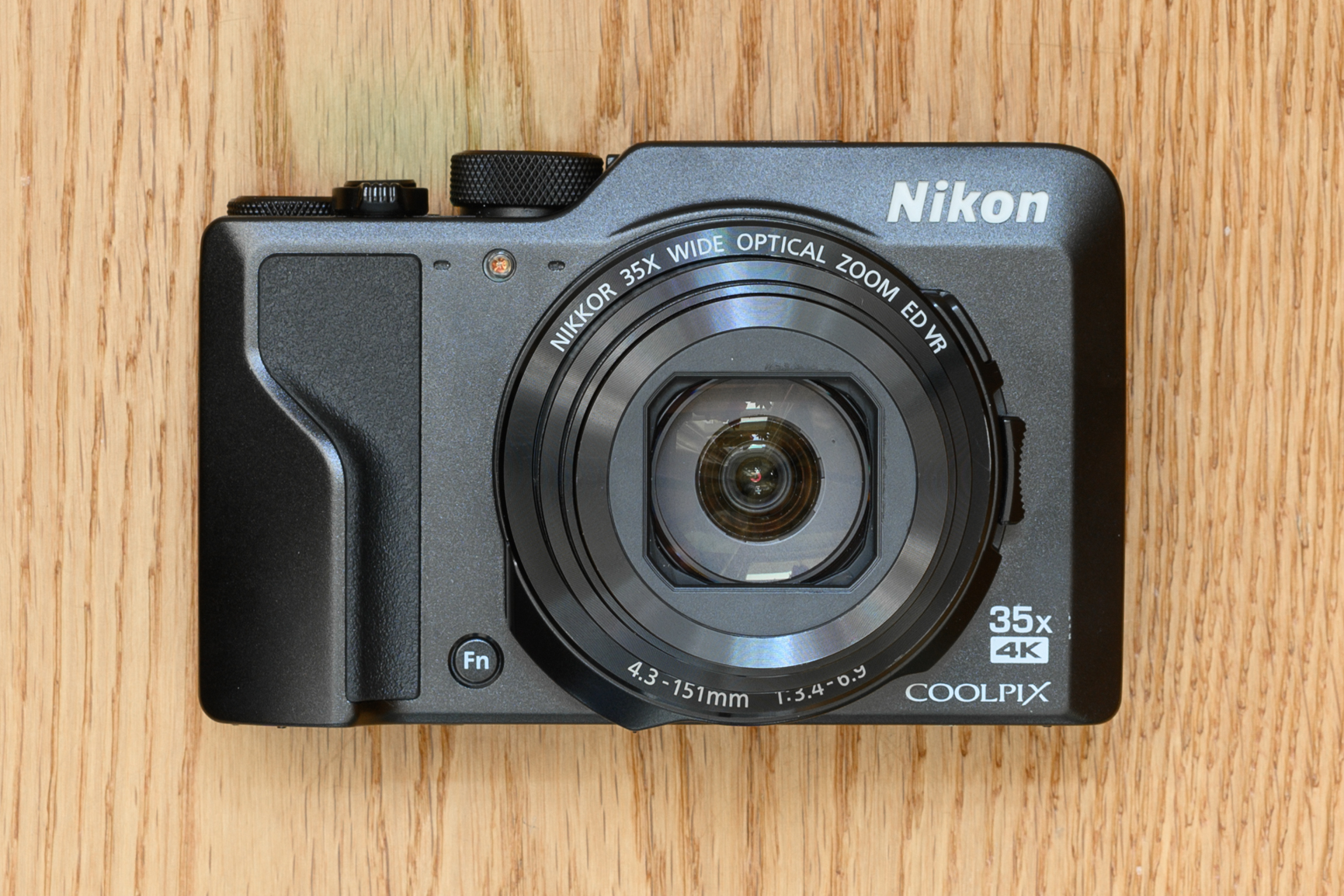
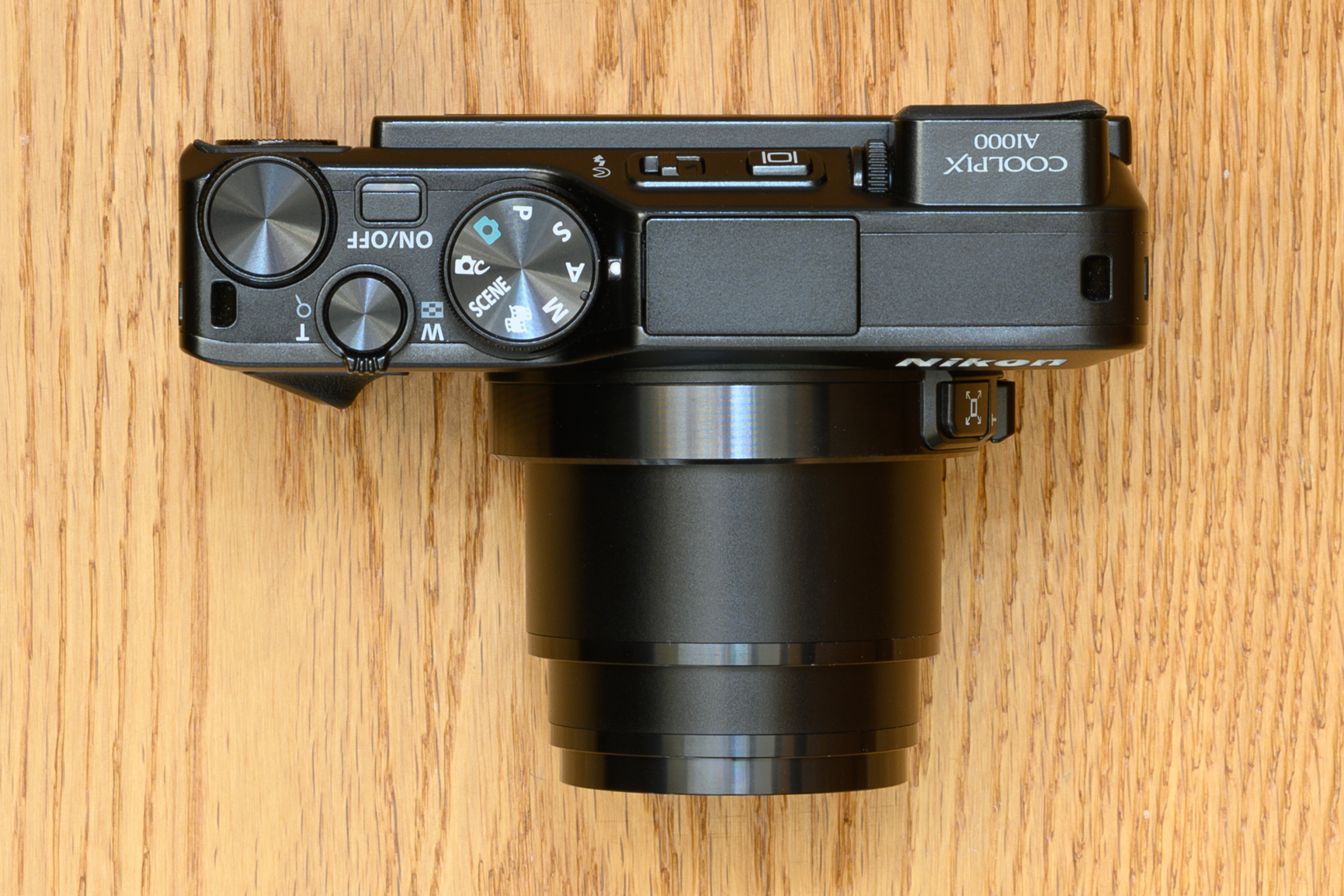
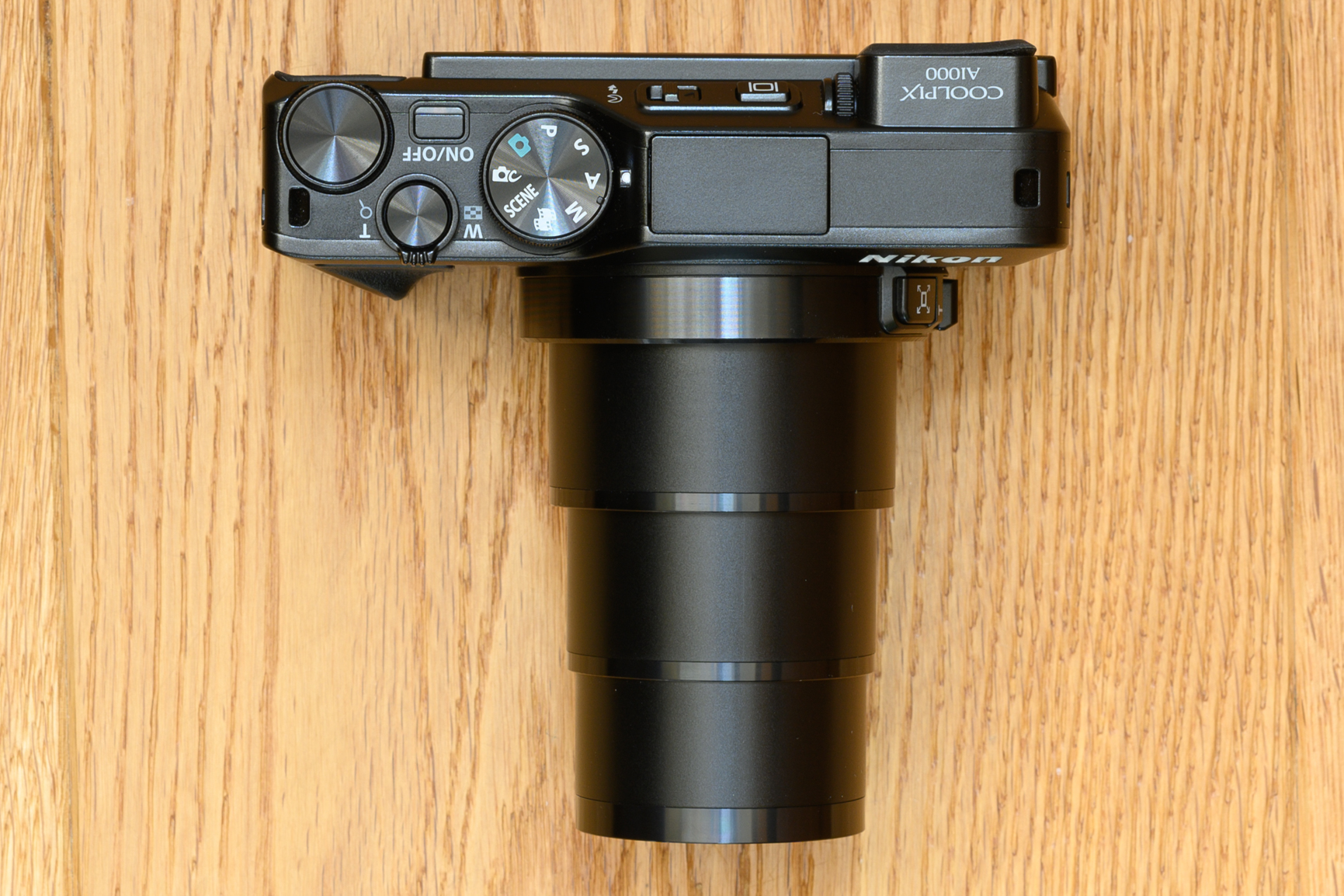
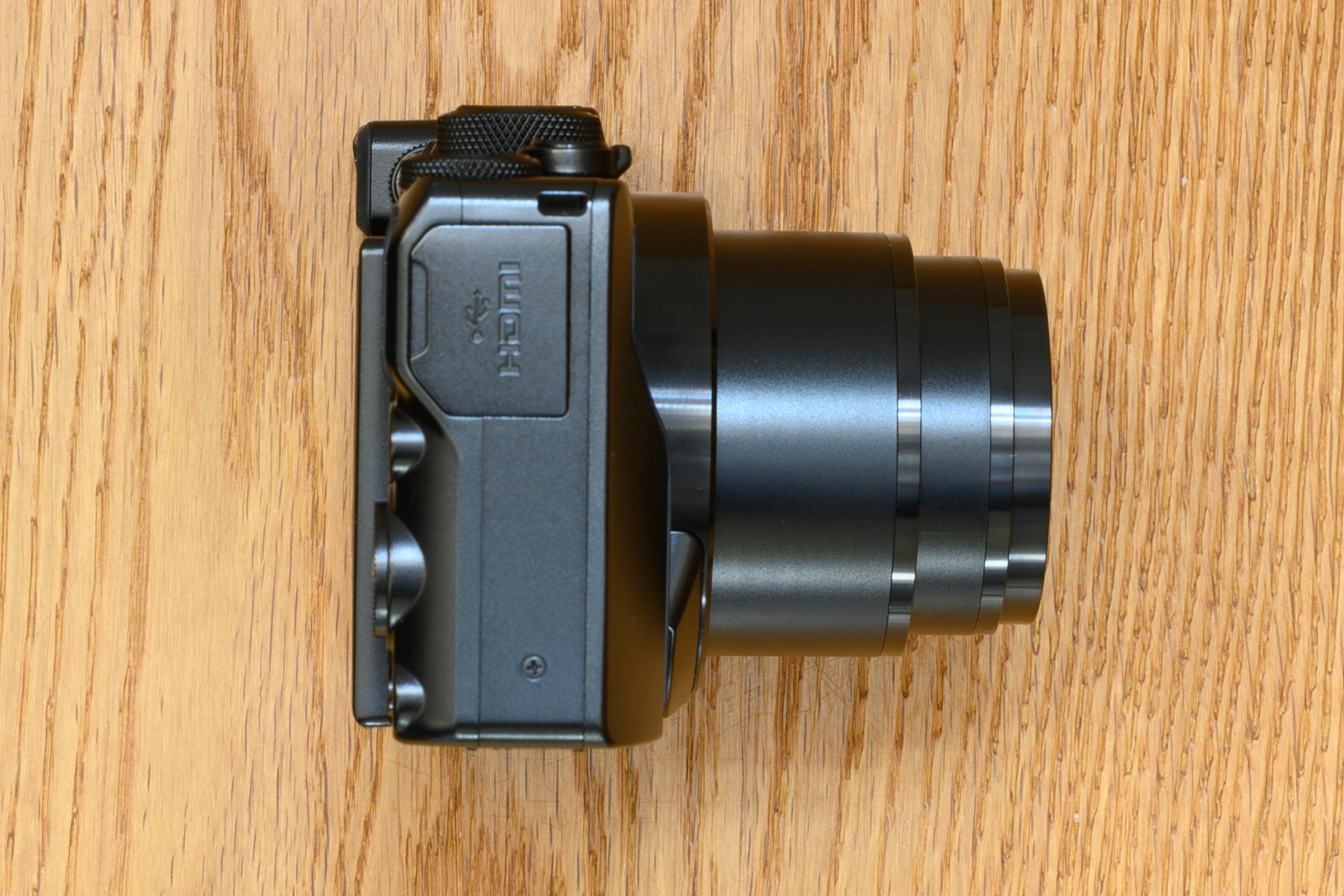
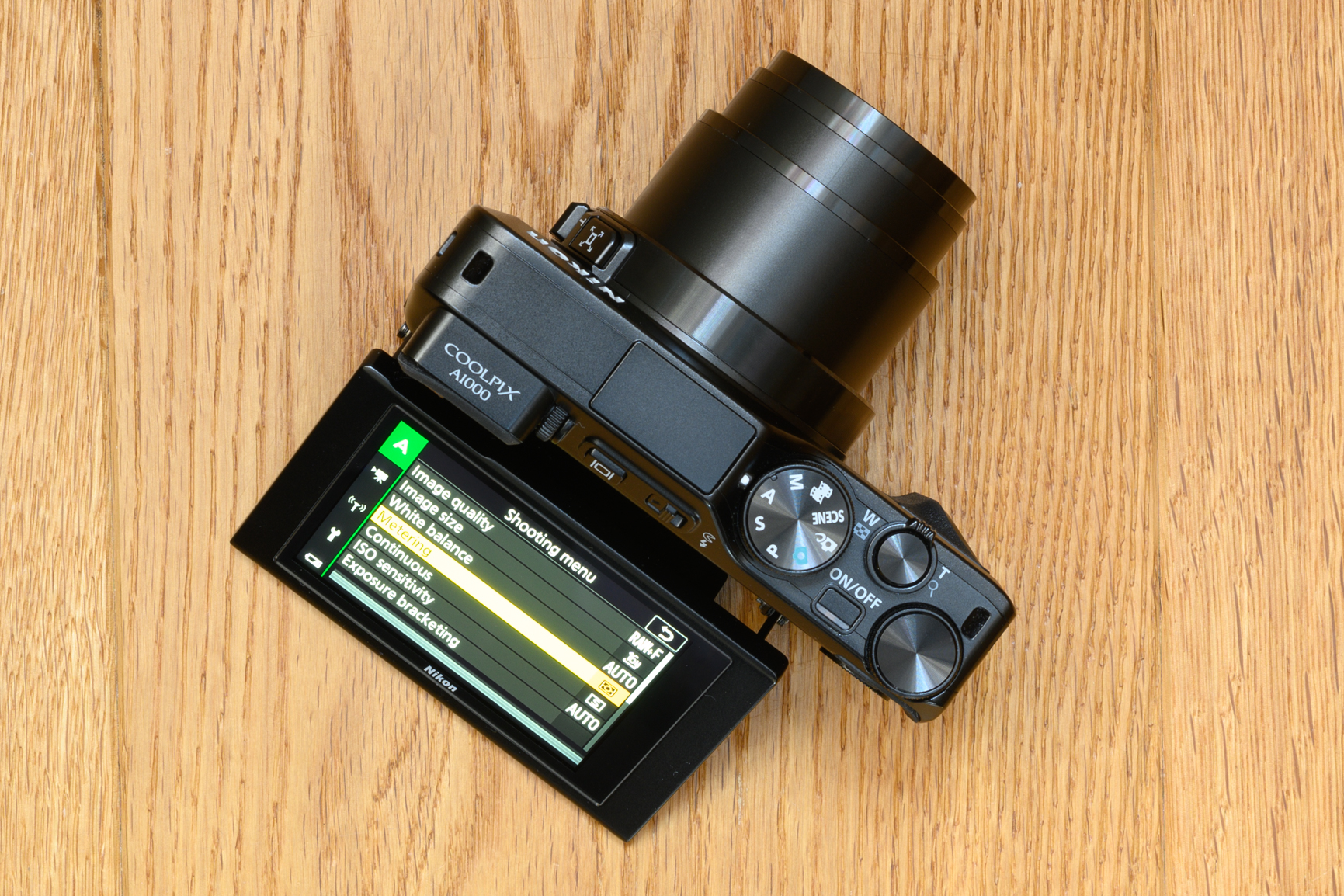
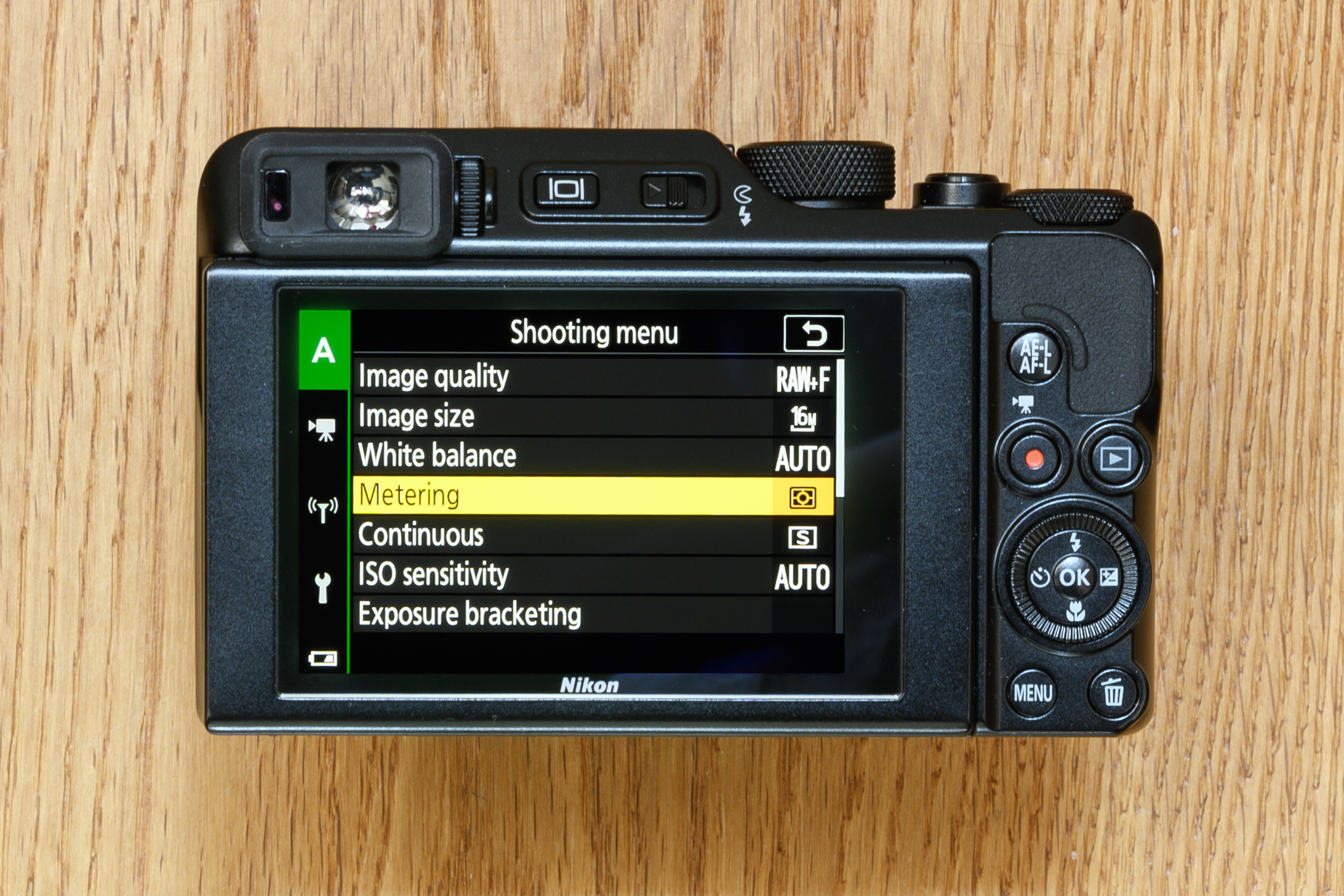
Nikon A1000 price
- Current price: £410 / $478 / AU$600
Connected, stabilized and raw-capable
- Raw and JPEG recording
- Vibration Reduction and Hybrid VR for videos
- Wi-Fi and Bluetooth on board
The Nikon A1000 sports a 1/2.3-inch 16.1MP back-illuminated sensor, and is capable of recording images in both raw and JPEG options, the former saved in the NRW format. That gives you the flexibility to use images straight away, or process them later if you have the inclination to do so.
The lens, which offers a focal range equivalent to 24-840mm in 35mm terms, is also stabilized with Nikon's Vibration Reduction technology. This is critical on cameras with such huge zoom ranges, and while Nikon doesn't state exactly how many stops of compensation the system provides here, you can see how well it's working in the viewfinder or on the LCD as you compose your images.
This system also works in conjunction with electronic Vibration Reduction when recording videos, with the pair forming a Hybrid VR system. Videos themselves can be captured in both 4K and Full HD resolutions, at a maximum 30fps and 60fps respectively.
Wi-Fi and Bluetooth also grace the spec sheet, and these enable you to connect the camera to a smartphone or tablet for easy image sharing via the SnapBridge app. This also allows you to embed information on location, in lieu of a GPS system built into the camera itself.
Sensor: 16MP 1/2.3-inch CMOS sensor
Lens: 24-840mm f/3.4-6.9 (in 35mm-equivalent terms)
Video: 4K (up to 30fps); Full HD (up to 60fps)
Burst mode: 10fps
Rear screen: 3-inch touchscreen, 1.036k dots
Viewfinder Electronic, 0.5cm, approx 1.166k dots
Battery life: Approx 250 frames (CIPA rating)
The focusing patterns on the Nikon A1000 are relatively comprehensive, with face priority, subject tracking and target finding AF modes, in addition to three manual options that allow you to position the focus point where you like. Well, not quite where you like; only the central portion of the frame appears to be covered by the focusing system, leaving the peripheries out of bounds.
You can also choose to focus using the touchscreen, although once again the edges of the screen aren't sensitive to presses. By default the camera is set to a Pre-AF option that pre-focuses as the camera is faced with a scene, although you can switch it to a more standard Single AF if you want - no doubt this will also save you a little battery life.
You can also call on a Macro shooting mode that allows you to focus 1cm away from your subject, while a manual focus option is augmented by focus peaking – useful when the subject is difficult for the focusing system to recognize, or when working in bright light.
The focusing system can do well once it's achieved rough focus, such as when focusing repeatedly in the same spot. It's also capable of focusing in less-than-perfect conditions reasonably promptly, although it doesn't manage to do so consistently, and this inconsistency makes it more difficult to rely on than it should be on such a camera.
Plenty of physical control
- 0.5cm EVF with eye sensor
- 3-inch tilting touchscreen, 1.04 million dots
- Metal front plate and rubber grip
Use the Nikon A1000 for only a short period of time and a key design flaw becomes apparent.
The eye sensor, which usefully instructs the A1000 to switch the feed between the viewfinder and the LCD as you bring your face towards and away from the camera, is positioned at the left-hand corner of the back plate. It's placement here means it very easily, and far too frequently, mistakes your left hand for your face, which has the effect of temporarily deactivating the display as you're composing an image.
Quite why this sensor isn't on the other side of the viewfinder, where it wouldn't be as prone to this issue, is a mystery. What's even more annoying is that on other occasions, when your face is right up against the sensor, it can take a while for it to actually bring the viewfinder to life. Worse still, turning the rear dial without bashing your thumb into the side of the protruding LCD isn't easy.
When it does come on, the viewfinder itself is generally fine. Admittedly it's very small, but then the viewfinders on all cameras of this sort are a far cry from the glorious displays we're getting used to on the latest breed of mirrorless models. It's relatively clear in bright light, and does help you to compose images better when lighting conditions are harsh; as long as you don't expect too much from it, it's perfect usable.
The LCD screen is pulled away from the camera through a small groove to its top-left-hand side, which frequently gives rise to the issue described above. Its degree of movement is good, though, with the flexibility to be titled all the way round to face the front and to be set to face upwards, parallel to the optical axis, which makes shooting from below easy. It's also nice to see the viewfinder's eye cup doesn't get in the way when the LCD screen is adjusted in this way, as it so often does on other cameras.
Image quality
- Effective image stabilization system
- Lens poorly protected against flare
- Heavy noise reduction at default settings
The Nikon A1000's raw files have a profile baked into them that automatically rectifies vignetting, distortion and chromatic aberration, so if you open images in Adobe Camera Raw or Lightroom the worst of these won't be seen. Some small traces of chromatic aberration remain right at the edges of the frame, but you really have to be looking for this.
In terms of detail, the difference between shooting subjects up close and those in the distance is marked at the wide-angle end. Finer detail in subjects further away, particularly more complex ones, isn't well resolved, an issue that's compounded by a somewhat aggressive noise reduction system, the effects of which can be seen even at lower ISOs.
You can't disable noise reduction for JPEGs in-camera completely, but you can either set it to Low – the default option is Normal – or process raw files yourself. Even on Low, however, noise reduction is still very obvious at higher ISOs.

Click here to see the full-size image

Click here to see the full-size image

Click here to see the full-size image

Click here to see the full-size image
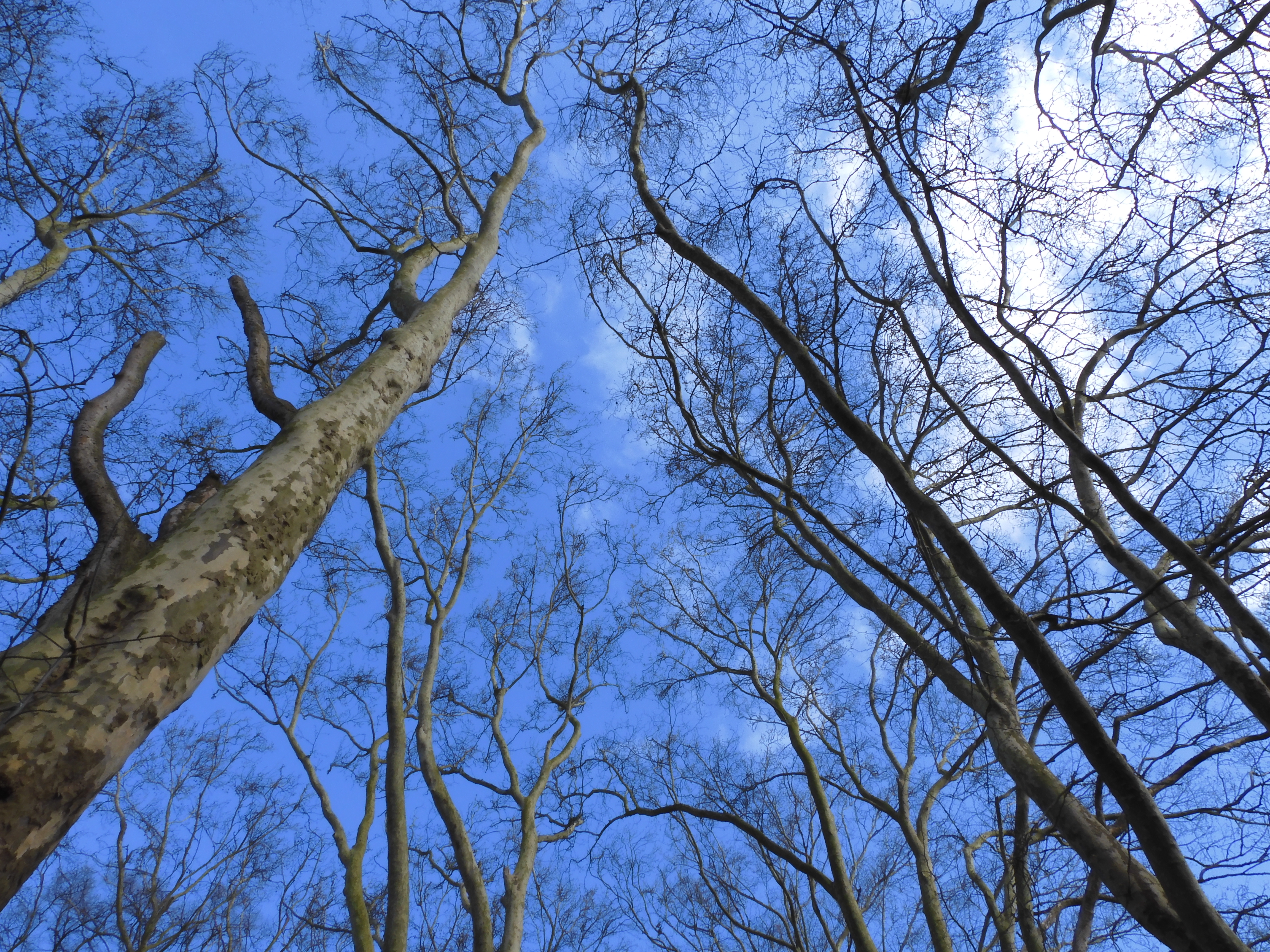
Click here to see the full-size image
Fortunately, results are better further up the focal range, with details well resolved at mid-range focal lengths and decent detail at the telephoto end. The A1000's Vibration Reduction system clearly does well to keep things more stable, which makes it easier to compose images with precision.
Colors in JPEGs are perfectly pleasing, and the camera's metering system tends to render out scenes faithfully, with just the occasional slip into overexposure here and there. The lens is poorly protected against flare when shooting in sunnier conditions, however, which is particularly a shame when you consider the A1000's overall appeal as a travel camera. 4K video quality isn't too bad for a camera with such a tiny sensor, but rolling shutter is an issue.
Ultimately, for this kind of price, we'd expect a lot more from the Nikon A1000. A design that allows for better operation, together with finer image quality and more consistent overall performance in terms of focusing and general response would justify the premium. It's not that the camera is overpriced as such – the Panasonic TZ95, for example, offers something very similar for a similar price tag – it's just that this really ought to be matched by a stronger performance to justify the outlay.
Not convinced? Try these
If the Nikon A1000 isn’t for you, here are three excellent alternatives to consider...
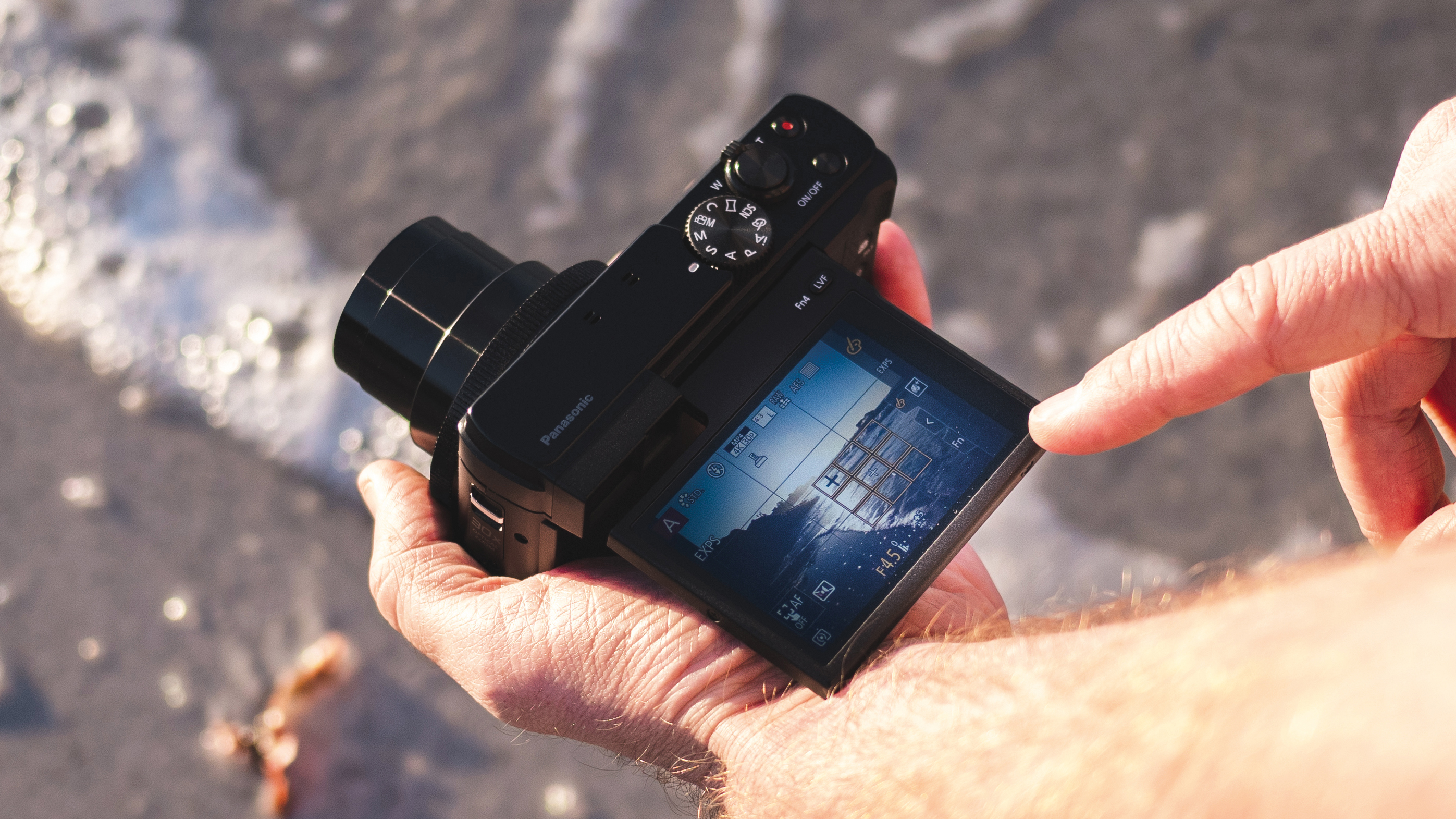
Panasonic Lumix ZS80 / TZ95
The latest travel zoom from the company that pioneered the concept, the similarly priced ZS80 (TZ95 outside the US) holds a handful of advantages over the A1000. This includes a higher-resolution EVF and a much stronger battery life, although the 30x optical zoom lens culminates at a slightly shorter 720mm-equivalent setting.
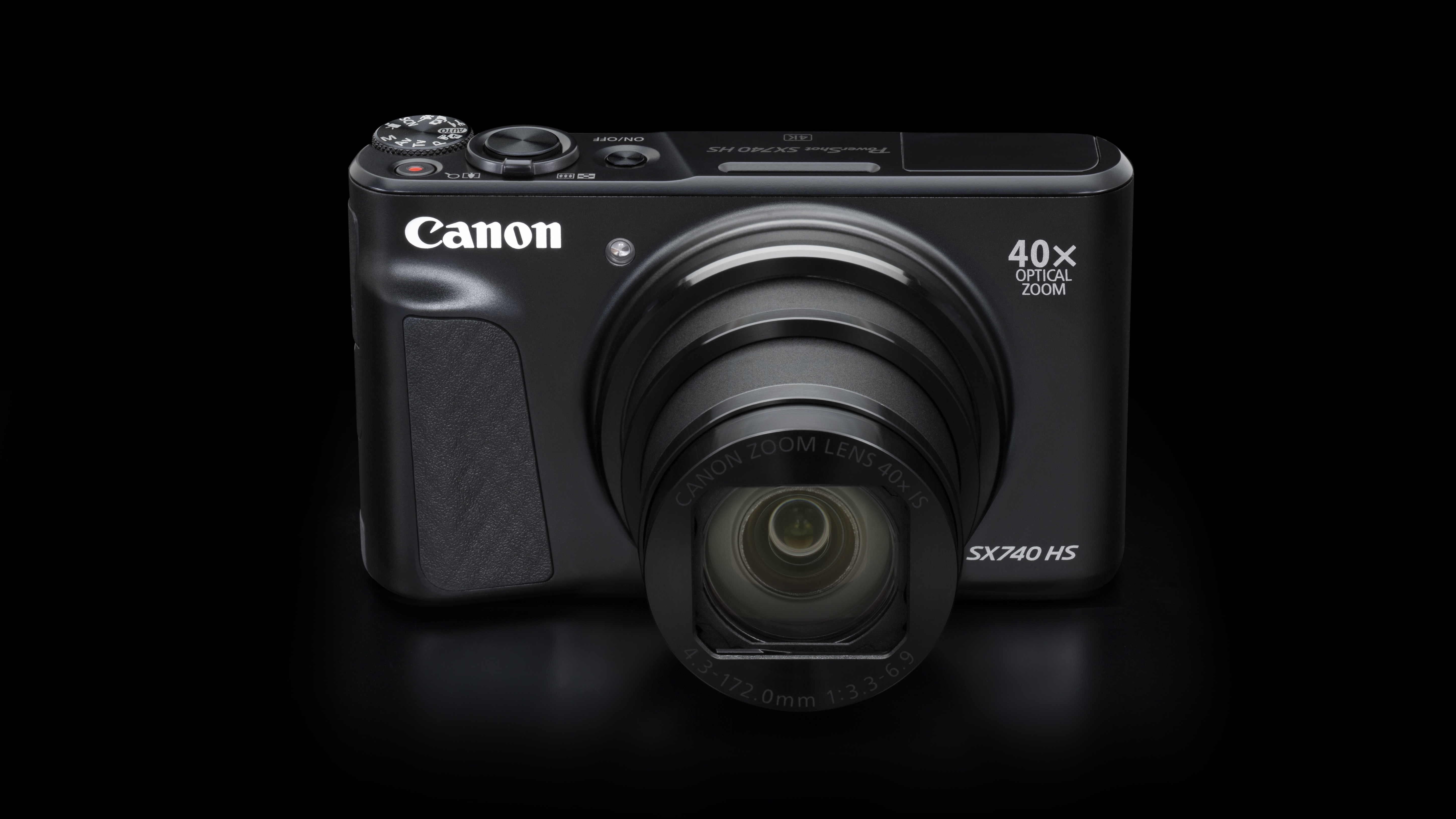
Canon PowerShot SX740HS
Canon's latest superzoom compact boasts a slightly longer 40x optical zoom than the A1000, although the two are matched in many other areas, such as 4K video recording, 10fps burst shooting and an LCD screen that flips all the way around for selfies. The lack of a viewfinder does give the A1000 an upper hand, although the fact that the Canon has been on the market for a few months makes it a little bit cheaper.
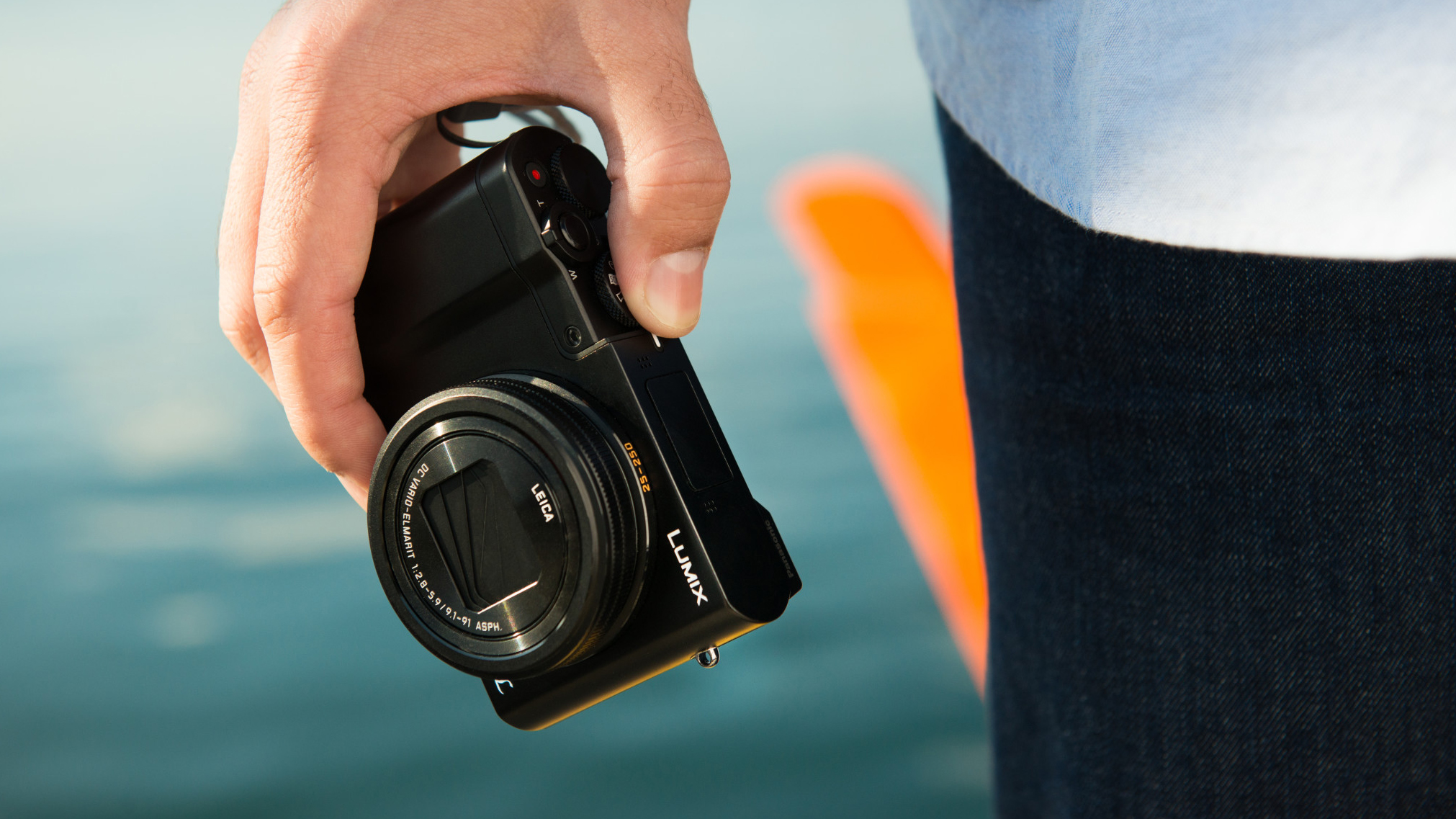
Panasonic Lumix ZS100 / TZ100
The ZS100 (TZ100 outside the US) may lack the A1000's humongous zoom range, but if you're happy to compromise here, and you don't mind an LCD screen that stays in place, you'll gain a camera with a much larger 1-inch sensor that gives you significantly better image quality. The 25-250mm (35mm equivalent) zoom lens has a decent range for everyday scenes and subjects, while the presence of raw shooting, an EVF and 4K video also show it to be a well-rounded and versatile option for holidays and more.
Read our in-depth Panasonic Lumix ZS100 / TZ100 review
